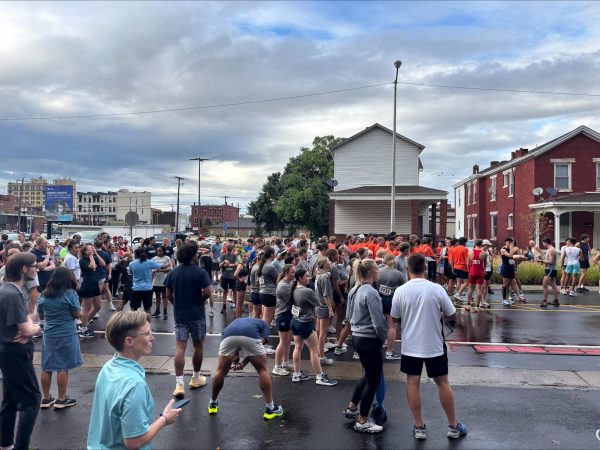An End in Sight?
While COVID-19 continues to consistently and sharply spread worldwide (especially in the United States), a potential vaccine may soon deliver much needed medical, social, and economic relief to our local communities. On Monday, Nov. 9, the major American pharmaceutical company Pfizer announced that early data indicated that its potential vaccine candidate was ninety percent effective in preventing individuals from contracting the coronavirus (COVID-19). A ninety percent efficacy rate is considered to be a successful vaccine candidate based upon the standards implemented by the United States Food and Drug Administration, which require at least a fifty percent efficacy rate for approval. While the data still must be reviewed and analyzed more thoroughly, the preliminary news released this week speaks volumes when it comes to finding a safe and effective vaccine that can be distributed to the public in a timely manner.
The vaccine was produced in tangency with the immunotherapy company BioNTech, which received more than one hundred million dollars in investments from Pfizer for the research and production. More than forty-three thousand people received the vaccine as part of the early clinical effort to establish clear and forthcoming data. While there is certainly more data needed to reach definite, long-term conclusions, the early results from phase three trials have been promising.
Despite potentially encouraging statistics for the vaccine, there are many challenges that nations will face as they attempt to distribute it to the mass public. There are at least two primary challenges that the world may face globally, with one being related to the number of vaccines produced as well as to how the vaccines will be delivered and distributed logistically. Numerically, the number of vaccines available will not meet the initial demand, so it is likely that many nations will be forced to prioritize individuals that receive the vaccine (such as the elderly and healthcare workers first, etc.). Thus far, the United States has ordered one hundred million doses of the vaccine, with an option to order up to five hundred million more. Europe has ordered two hundred million with the potential for one hundred million more. Other countries have also placed orders. Challenges can be solved, however, and many countries intend to do exactly that.
Although the large pharmaceutical company is known for its vaccine and medical research, Pfizer is also responsible for producing many well-known and commonly used medications today. Pfizer has products in popular pharmaceutical brands such as Advil, EpiPen, Eliquis, and many more, including vaccines for diseases such as pneumonia and other significant illnesses. If this vaccine becomes the forefront candidate to potentially curb the spread of the disease, Pfizer will be known for much more than just producing various everyday medications.
Even though the Pfizer/BioNTech vaccine has demonstrated favorable results, there are many other vaccines currently in development that have the potential to be successful and help to alleviate much of the worldwide stress and pressure from COVID-19. After all, as many people become weary and tired of the many necessary measures needed to help prevent the spread of the disease, COVID-19 is not slowing down.
There are many people watching and patiently waiting to see if there will be a solution soon as the conclusion of the year approaches. Locally, COVID-19 has had a significant impact economically, socially, and so much more, and a vaccine may help initiate positive growth as a community once more. It is important that we continue to educate ourselves about vaccines and various development/scientific processes, so that we can understand their potential effectiveness and ability to save lives. Together, we must continue to fight against COVID-19 and take measures to keep our community safe. An end may be in sight!


